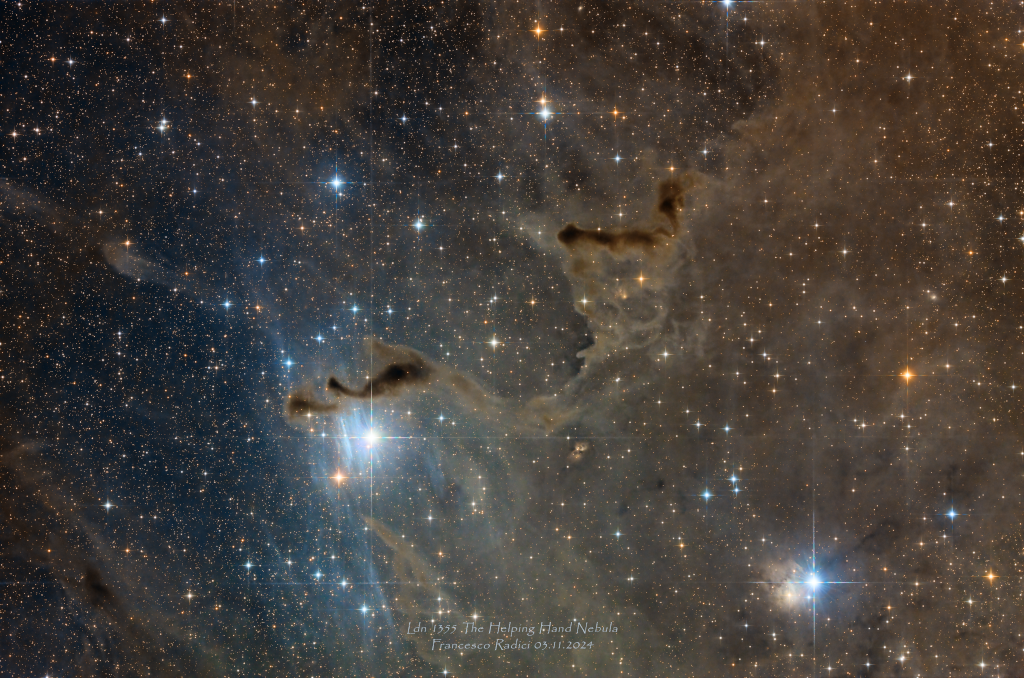
Stars are capable of creating extensive and complex dust structures from the dense and opaque molecular clouds from which they originate. The tools employed by stars to create their intricate structures are high-energy light and fast stellar winds. The heat generated by the stars causes the dark molecular dust to evaporate and also disperses and causes the ambient hydrogen gas to glow. The image depicts a nascent open cluster of stars, designated IC 1590, encircling the intricate interstellar dust structures within the emission nebula NGC 281. This nebula has been informally dubbed the “Pac-Man Nebula” due to its distinctive overall shape. The dust cloud situated just above the center of the image is classified as a Bok Globule, which may gravitationally collapse and form a star or stars. The Pacman Nebula is situated approximately 10,000 light-years away, within the constellation of Cassiopeia.

